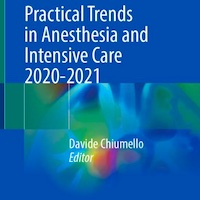Tag: sepsis
Staphylococcus Epidermidis Infections Linked to ICU Septic Shocks
Bloodstream infections caused by Staphylococcus epidermidis (SE-BSI) may lead to septic shock in patients admitted to intensive care unit (ICU), according to a study. For the study, researchers looked at a retrospective... read more
The Contribution of Procalcitonin, C-Reactive Protein and Interleukin-6 in the Diagnosis and Prognosis of Surgical Sepsis
The mortality rate was quite high in our study, consistent with the elevated serum biomarker concentrations, which were higher in non-survivors compared with survivors. C-reactive protein (CRP) and IL-6 were the most effective... read more
Doppler Ultrasound Identified Venous Congestion in Septic Shock
Venous congestion is a pathophysiological state where high venous pressures cause organ edema and dysfunction. Venous congestion is associated with worse outcomes, particularly acute kidney injury (AKI), for critically ill... read more
Optimal Fluid Therapy for Sepsis Management in Critically Ill Adults
For a study, researchers aimed to analyze the fluid treatment in septic critically ill adults. About 20% to 30% of patients were admitted to an ICU with sepsis. In sepsis patients, investigators observed intravenous fluid... read more
Ground-breaking New AI Technology for Severe Sepsis Rapid Identification
ASEP Medical Holdings Inc. announced the ground-breaking use of artificial intelligence (AI) to rapidly identify infections at increased risk of severe sepsis. The method was developed by the Hancock Lab, under the guidance... read more
Fluid Therapy for Critically Ill Adults with Sepsis
Fluids are an important component of treating patients who are critically ill with sepsis. Although optimal fluid management in patients with sepsis remains uncertain, clinicians should consider the risks and benefits of... read more
Heparin-Binding Protein Predictive Value and D-Dimer in Sepsis Patients
As common clinical indicators for predicting sepsis, both HBP and D-dimer have high diagnostic effectiveness. Furthermore, the combined application of these two biomarkers can achieve favorable effects. In clinical practice,... read more
Rapid Sepsis Tests Using Magnetic Nanoparticles
Qun Ren, an Empa researcher, and her team are currently developing a diagnostic procedure that can rapidly detect life-threatening blood poisoning caused by staphylococcus bacteria. Staphylococcal sepsis is fatal in up... read more
Validation of qSOFA as a Screening Tool for Early Identification of Sepsis Patients
Sepsis and septic shock are major healthcare problems, affecting millions of people around the world each year. The speed and appropriateness of therapy administered in the initial hours of treatment are likely to influence... read more
Biggest AMR dilemma: to give, or not to give antibiotics?
Sepsis (a dysregulated reaction of the body to infection with 50 million cases per year) must be treated with antibiotics as soon as it is suspected — ideally, within the first hour. Antibiotics are thus easily administered... read more
Predicting Deterioration of Sepsis Patients Using Continuous HVR Analysis
We showed that continuous electrocardiograms (ECG) recordings can be automatically analyzed and used to extract heart rate variability (HRV) features associated with clinical deterioration in sepsis. The predictive accuracy... read more
Diastolic Shock Index and Septic Shock Outcome
Early recognition and resuscitation of patients in septic shock are critical skills for an emergency medicine physician. Many clinical decision-making tools have been developed and validated in their use to identify and... read more
AHRQ Errors Report was “Outright Unconscionable”
Headlines this winter screamed the bad news: Emergency physicians are literally killing people! "As many as 250,000 people die every year because they are misdiagnosed in the emergency room, with doctors failing to identify... read more
Optimal Bundle of Recommendations for Sepsis
The aim of this retrospective cohort study was to identify among the Surviving Sepsis Campaign (SSC) guidelines the optimal bundle of recommendations that minimize 28-day mortality. The bundle of six recommendations is... read more
Practical Trends in Anesthesia and Intensive Care 2020-2021
This book offers an essential guide to managing the most-debated hot topics of practical interest in anesthesia and intensive care. Part I reviews the state of the art in issues concerning both intensive care medicine... read more

Methylene Blue Reduced Length of Stay in ICU
In patients with septic shock, methylene blue (MB) initiated within 24 h reduced time to vasopressor discontinuation and increased vasopressor-free days at 28 days. It also reduced length of stay in ICU and hospital without... read more
The CLOVERS Trial: Does Nothing Matter in Sepsis?
The CLOVERS trials is an open label RCT that did not demonstrate any difference (beneficial or harmful) from using a restrictive fluid strategy over a liberal fluid strategy in sepsis-induced hypotension. Do whatever... read more
Early Identification of Intra-abdominal Infection and Sepsis
This case report illustrates the ability of the novel biomarker pancreatic stone protein (PSP) concentrations to act as a warning sign, allowing the early identification of intra-abdominal infection and post-operative peritonitis... read more
Remote Ischemic Conditioning in Septic Shock
The treatment known as RECO did not significantly reduce the severity of organ failure as measured by the mean daily SOFA (sequential organ failure assessment) score from the start of the study to day 4 in patients with septic... read more
Clarifying the Fictions Surrounding Sepsis: Strategies for Improved Management and Outcomes
It is important to clarify the myths surrounding sepsis and to provide a clear understanding of the condition. This can help set realistic expectations about outcomes and inform effective strategies for managing sepsis, including... read more
Association of Vancomycin Plus Piperacillin-tazobactam with Early Changes in Creatinine vs. Cystatin C
Although dozens of studies have associated vancomycin + piperacillin–tazobactam with increased acute kidney injury (AKI) risk, it is unclear whether the association represents true injury or a pseudotoxicity characterized... read more
Algorithm that Detects Sepsis Cut Deaths by 18%
Hospital patients are at risk of a number of life-threatening complications, especially sepsis—a condition that can kill within hours and contributes to one out of three in-hospital deaths in the U.S. Overworked doctors... read more









